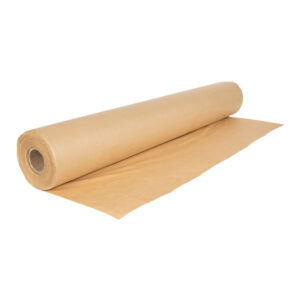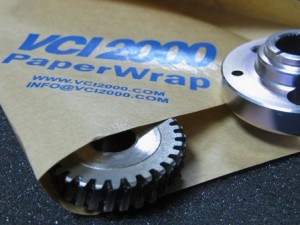In the realm of corrosion prevention, the challenges posed by harsh environmental conditions can be particularly daunting. Industries that operate in extreme climates, where factors like humidity, temperature variations, and exposure to the elements are heightened, require robust solutions to protect their valuable metal assets. This blog post delves into the resilience of VCI Emitter Pads in weathering the storm of harsh environmental conditions.
The Unforgiving Nature of Harsh Environments
Harsh environmental conditions, whether characterized by extreme temperatures, high humidity, saline air, or a combination of these factors, create an accelerated corrosion environment. Metal surfaces exposed to such conditions are more susceptible to rust and corrosion, leading to a faster deterioration of equipment, machinery, and infrastructure.
The Vulnerability of Traditional Corrosion Prevention Methods
Traditional corrosion prevention methods often fall short in the face of harsh environmental challenges. Coatings and inhibitors that may be effective in milder climates can struggle to provide adequate protection when exposed to extreme conditions. This vulnerability underscores the need for advanced and adaptable corrosion prevention technologies.
VCI Emitter Pads: The Adaptive Solution
VCI Emitter Pads stand out as a beacon of hope in the battle against corrosion in harsh environments. Their adaptability and unique mechanism make them particularly effective in mitigating the impact of extreme weather conditions on metal surfaces.
The Mechanism of VCI Emitter Pads
Before we explore the specific ways in which VCI emitter pads tackle harsh environmental conditions, let’s revisit the fundamental mechanism behind VCI technology. Volatile Corrosion Inhibitors, encapsulated in emitter pads, release vapor-phase molecules that form a protective layer on metal surfaces. This layer acts as a barrier, preventing corrosive elements such as moisture and oxygen from coming into contact with the metal.
Adapting to Temperature Extremes
Cold Environments
In freezing temperatures, moisture can condense on metal surfaces, accelerating the corrosion process. VCI emitter pads excel in cold environments by creating a protective layer that prevents condensation and inhibits corrosion. This is particularly crucial for industries operating in Arctic climates or cold storage facilities where maintaining the integrity of metal components is paramount.
Hot Environments
High temperatures can exacerbate the corrosive effects of oxygen on metal. VCI emitter pads are designed to withstand heat and continue releasing corrosion-inhibiting vapors even in hot environments. This adaptability makes them suitable for industries like foundries, steel mills, and desert-based operations where extreme heat is a constant challenge.
Battling Humidity Challenges
High humidity levels create an ideal environment for corrosion to thrive. Traditional inhibitors may struggle in humid conditions, but VCI emitter pads rise to the occasion. The vapor-phase molecules released by these pads form a protective shield, even in the presence of moisture-laden air. This makes them a valuable asset in industries such as shipping, where metal components are constantly exposed to sea air.
Resisting Corrosion in Saline Environments
Marine and coastal industries face a unique set of challenges due to the corrosive nature of saltwater. VCI emitter pads are formulated to resist the corrosive effects of saline environments. By creating a protective barrier on metal surfaces, these pads contribute significantly to the longevity of equipment in shipyards, offshore platforms, and coastal infrastructure.
Submersion and Water-Immersion Capabilities
Certain industrial processes involve the submersion or water immersion of metal components. VCI emitter pads, with their water-resistant properties, continue to release corrosion inhibitors even in submerged conditions. This makes them invaluable in applications such as underwater pipelines, where traditional corrosion prevention methods may falter.
Case Studies: VCI Emitter Pads in Action
To illustrate the effectiveness of VCI emitter pads in harsh environmental conditions, let’s examine real-world case studies from industries facing extreme weather challenges.
Case Study 1: Arctic Oil Exploration
An oil exploration company operating in the Arctic integrated VCI emitter pads into their equipment storage protocol. Despite sub-zero temperatures and high humidity, the company experienced a 40% reduction in corrosion-related equipment failures, resulting in substantial cost savings.
Case Study 2: Coastal Infrastructure Protection
A coastal city’s infrastructure maintenance department employed VCI emitter pads to protect metal structures exposed to salty sea air. The result? A 25% decrease in maintenance costs and a notable extension of the lifespan of bridges, railings, and other coastal infrastructure components.
Best Practices for Maximizing VCI Emitter Pad Performance in Harsh Environments
While VCI emitter pads demonstrate remarkable resilience in harsh environments, adopting best practices can further enhance their performance:
1. Customized Formulations
Select VCI emitter pads with formulations specifically designed for the unique challenges of your environment. Manufacturers often offer customized solutions to address the specific corrosive elements present in different climates.
2. Strategic Placement
Carefully consider the placement of VCI emitter pads to ensure optimal coverage. Factors such as airflow patterns, metal surface geometry, and the proximity of corrosive elements should be taken into account for strategic deployment.
3. Regular Monitoring and Replacement
Harsh environments can accelerate the depletion of VCI emitter pads. Implement a routine monitoring and replacement schedule to ensure a continuous and effective corrosion-inhibiting atmosphere around metal surfaces.
4. Integration with Maintenance Protocols
Integrate VCI technology into overall maintenance protocols. Combining VCI emitter pads with regular inspections and maintenance activities enhances the overall protection of metal assets in harsh environments.
Overcoming Challenges for a Sustainable Future
As industries continue to expand into diverse and challenging environments, the need for corrosion prevention solutions that can weather the storm becomes increasingly critical. VCI emitter pads, with their adaptability and proven efficacy, offer a sustainable and cost-effective approach to combating corrosion in harsh environmental conditions.
Conclusion
In the battle against corrosion, where the elements themselves become formidable foes, VCI emitter pads emerge as a beacon of resilience. Their ability to adapt to temperature extremes, combat humidity challenges, resist corrosion in saline environments, and even perform in submersion scenarios makes them a versatile and indispensable asset for industries operating in harsh climates. As technology continues to evolve, and industries push the boundaries of exploration and production, VCI emitter pads stand as a testament to the innovation required to weather the storm and protect the longevity of valuable metal assets in the face of environmental adversity.






